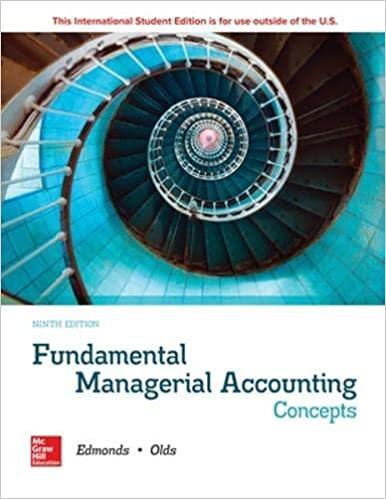
4. In many US states, high school students are offered scholarships are given to students to students who remain in-state for university or college. For example, Kansan high school students can receive scholarships for $12,500 if they go to a university within Kansas. These types of policies are often thought to fight brain-drain from states that lack a high-skill workforce. Suppose that you are a policy analyst investigating the effect of scholarship provision on brain-drain. As a baseline model you estimate Residencyi,t=0+1Scholarshipi,t1+i where Residency is a binary variable indicating whether or not Kansas high school student i resided in Kansas in time t and Scholarship is a binary variable indicating whether or not Kansas high school student i received a scholarship to attend an in-state university in time t1. Suppose the estimated model was Residencyi,t=(0.0023)0.721(0.00078)0.043Scholarshippi,t1 a) Interpret ^0 and ^1. b) Do you believe that ^1=0.043 is the causal effect of scholarship on residency? c) Do you believe that ^1 is biased up or down? If not, why not? If so, explain the direction of the hypothesized bias. d) Suppose that the scholarship was contingent on a high school student's GPA being at least 3.2. How could you use this threshold in regression discontinuity design? Illustrate with a graph showing the effect of scholarship as a function of GPA. Bonus: I mentioned in class that Regression discontinuity is a type of instrumental variable design. Explain intuitively what the connection is and what the instrumental variable is in a regression discontinuity. 4. In many US states, high school students are offered scholarships are given to students to students who remain in-state for university or college. For example, Kansan high school students can receive scholarships for $12,500 if they go to a university within Kansas. These types of policies are often thought to fight brain-drain from states that lack a high-skill workforce. Suppose that you are a policy analyst investigating the effect of scholarship provision on brain-drain. As a baseline model you estimate Residencyi,t=0+1Scholarshipi,t1+i where Residency is a binary variable indicating whether or not Kansas high school student i resided in Kansas in time t and Scholarship is a binary variable indicating whether or not Kansas high school student i received a scholarship to attend an in-state university in time t1. Suppose the estimated model was Residencyi,t=(0.0023)0.721(0.00078)0.043Scholarshippi,t1 a) Interpret ^0 and ^1. b) Do you believe that ^1=0.043 is the causal effect of scholarship on residency? c) Do you believe that ^1 is biased up or down? If not, why not? If so, explain the direction of the hypothesized bias. d) Suppose that the scholarship was contingent on a high school student's GPA being at least 3.2. How could you use this threshold in regression discontinuity design? Illustrate with a graph showing the effect of scholarship as a function of GPA. Bonus: I mentioned in class that Regression discontinuity is a type of instrumental variable design. Explain intuitively what the connection is and what the instrumental variable is in a regression discontinuity







